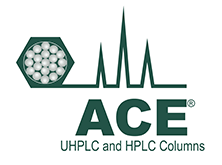Artificial sweeteners are increasingly used as a low-calorie substitute for sugar in food and beverages and can help to control body weight and insulin levels and aid dental health. Artificial sweeteners may be added individually or in combination to obtain specific taste characteristics. Classified as food additives, artificial sweeteners are regulated substances, with strict limits in place for the amounts that can be added to food and drinks. Artificial sweeteners authorised for use vary from country to country. Due to these controls, sensitive and robust methods are required for their determination in food matrices. This application note summarises a method for the separation of artificial sweeteners that is suitable for routine use in the food industry.

Artificial sweeteners have widely varying structural forms and are often used as food additives in combination.





